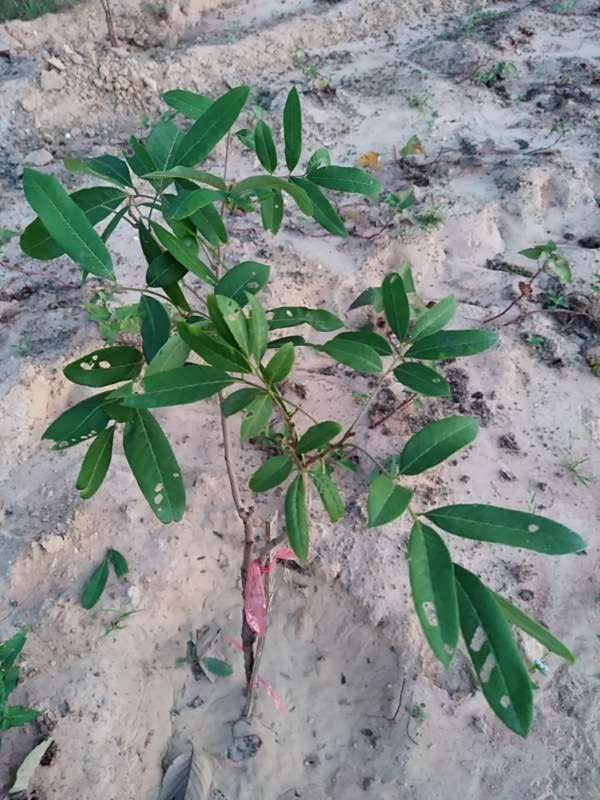ID: 6W4-Z9D8
ID: 6W4-Z9D8
Longan
Dimocarpus longan
Photo
Thailand
09:38 - 31°C
My connections
My ID card
Who am I?
Date of birth
01/14/2023
Name
Longan
Tree
Longan
Where am I located?
Country
Thailand
Place of birth
Na Nong Phai
Coordinates
15° 14′ 48.53″ N
103° 33′ 57.26″ E
/103.56590505,15.24681373,0/500x333@2x?access_token=pk.eyJ1IjoidG9tbWFzb3NwZXJvbmkiLCJhIjoiY2tnOTE3eW12MDJqazMybXNzOWV1YjloOSJ9.wtGsuDU7XIKjcv2cq8CiXw&logo=false&attribution=false)
My Timeline
The important moments in your tree's life.
Seed
It all starts with a tiny seed, nice and warm in the soil.
Nursery
Your seedling is big enough to be welcomed into one of our nurseries, along with many others.
Planted
We’re here! Your tree has reached its new home: it’s been planted by a smallholder, who’ll take care of it for years to come.
Photo
Strike a pose! Now that it’s big enough, here’s a photo of your tree!
My Gallery
Nursery

Planted
/103.56590505,15.24681373,0/500x333@2x?access_token=pk.eyJ1IjoidG9tbWFzb3NwZXJvbmkiLCJhIjoiY2tnOTE3eW12MDJqazMybXNzOWV1YjloOSJ9.wtGsuDU7XIKjcv2cq8CiXw&logo=false&attribution=false)
103° 33′ 57.26″ E
Photo

Curiosity about me
The important moments in your tree's life.
Let's start with introductions
The Longan is a tropical tree with a wide, thick canopy, reaching up to 12 metres in height. It is sensitive to frost and thrives in sandy soil. It produces edible fruits similar to those of the Lychee (a tree from the same family as the Longan, Sapindaceae). Originating from China, Longan trees can now be found over most of South-East Asia and even in Australia. The fruit is used in all of these countries for various purposes: it can be eaten fresh, cooked different ways (from soups to desserts) and even dried. It is also used in traditional Chinese medicine.
Meaning
Fantasy
In Chinese, the tree’s name means “dragon eye”. This is because the fruits, once their thin shells are removed, reveal their semi-transparent flesh: their large black seed is easily visible inside. A shape that can calls to mind an eyeball … a dragon’s, in fact!

How much CO2 I’ll absorb
My estimated CO2 absorption capacity is based on the first 10 years of my life*
Current absorption
- 40 kg
2023
0 kg
2033
-200 kg
* The tree will continue to absorb CO2 even after the tenth year. Therefore this is a prudent estimate.
How I am useful to local communities

Consumption and sales
Its fruits, seeds and/or leaves are used as food in the farmers' families or are sold on local markets.
My benefits
80%
Food Security
The trees will bear fruits, some that will be edible immediately and others that can become edible through processing, ensuring food resources over time.
60%
Economic development
The trees' fruits and the products derived from their transformation can be traded in local networks, offering income opportunities.
20%
CO₂ Absorption
During its life cycle, each tree will absorb CO₂. The trees you plant can offset your emissions.
30%
Environmental protection
The trees are planted in agroforestry systems that favor the virtuous interaction between the different species and their positive impact on the environment and on the land.